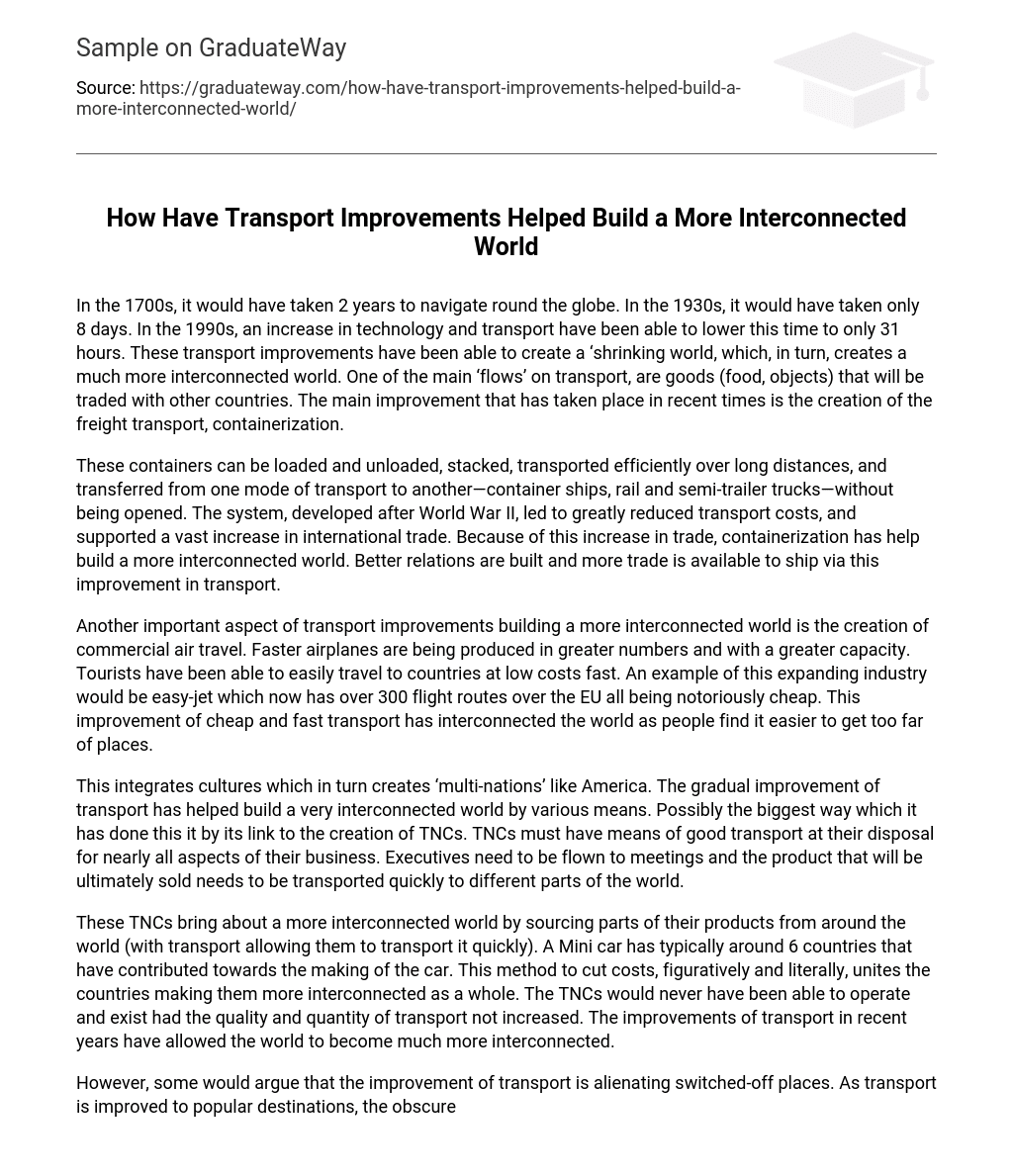During the 1700s, it would have required a span of 2 years to circumnavigate the globe. However, by the 1930s, this time had drastically reduced to just 8 days. In the 1990s, advancements in technology and transportation resulted in a significant decrease to a mere 31 hours. These improvements in transport have effectively contributed to the concept of a ‘shrinking world’, which consequently fosters a more interconnected global community. Among the prominent aspects of transport, goods such as food and objects play a crucial role, as they are traded with other countries. The noteworthy development in recent times has been the introduction of containerization within freight transport.
Containers are highly versatile and efficient, allowing for easy loading, unloading, stacking, and transportation over long distances. They can be seamlessly transferred between different modes of transport (e.g., container ships, rail, semi-trailer trucks) without the need for opening them. This system was developed after World War II and has greatly reduced transport costs while enabling a substantial growth in international trade. As a result, global relations have become more interconnected, leading to expanded trade opportunities.
Developing commercial air travel is another crucial aspect of fostering a more interconnected world. The production and capacity of faster airplanes have substantially increased, allowing tourists to enjoy cost-effective and rapid travel to different countries. An outstanding example of this growing industry is easy-jet, which offers numerous affordable flight routes across the EU. As a result, this improvement in inexpensive and efficient transportation has greatly facilitated global interconnectedness as individuals can now easily access distant destinations.
The blending of cultures, like in the United States, generates “multi-nations”. The global transportation system has had a significant impact on promoting interconnectedness. An important means for achieving this is through the formation of Transnational Corporations (TNCs). TNCs heavily depend on efficient transportation for different facets of their functions. Executives frequently require air travel for meetings, and their goods must be rapidly transported to various international destinations.
These transnational corporations (TNCs) contribute to a more interconnected world by sourcing product parts globally (with the help of efficient transportation). A Mini car, for example, involves contributions from approximately six countries in its manufacturing process. This approach not only reduces costs but also brings these countries closer together, fostering interconnectedness. Without advancements in transport quality and quantity, TNCs would not have been able to thrive and exist. Recent improvements in transportation have significantly enhanced global interconnectivity.
However, there is an argument that improving transport is causing remote places to become disconnected. As popular destinations improve their transportation systems, lesser-known places such as the Amazon appear to be losing attention. The interconnected world may actually be strengthening existing connections instead of creating new ones, suggesting that transport improvements merely reinforce existing links. In order for connection to be established, transport would need to start from scratch and create a new link.
The argument presented here suggests that the impact of enhancing transportation on the shrinking world is negative rather than positive. In summary, despite a few counterarguments against the improvement of transportation leading to a more connected world, it is evident that transportation enhancements have significantly improved countries’ ability to engage with one another and establish mutually beneficial connections for the future.





